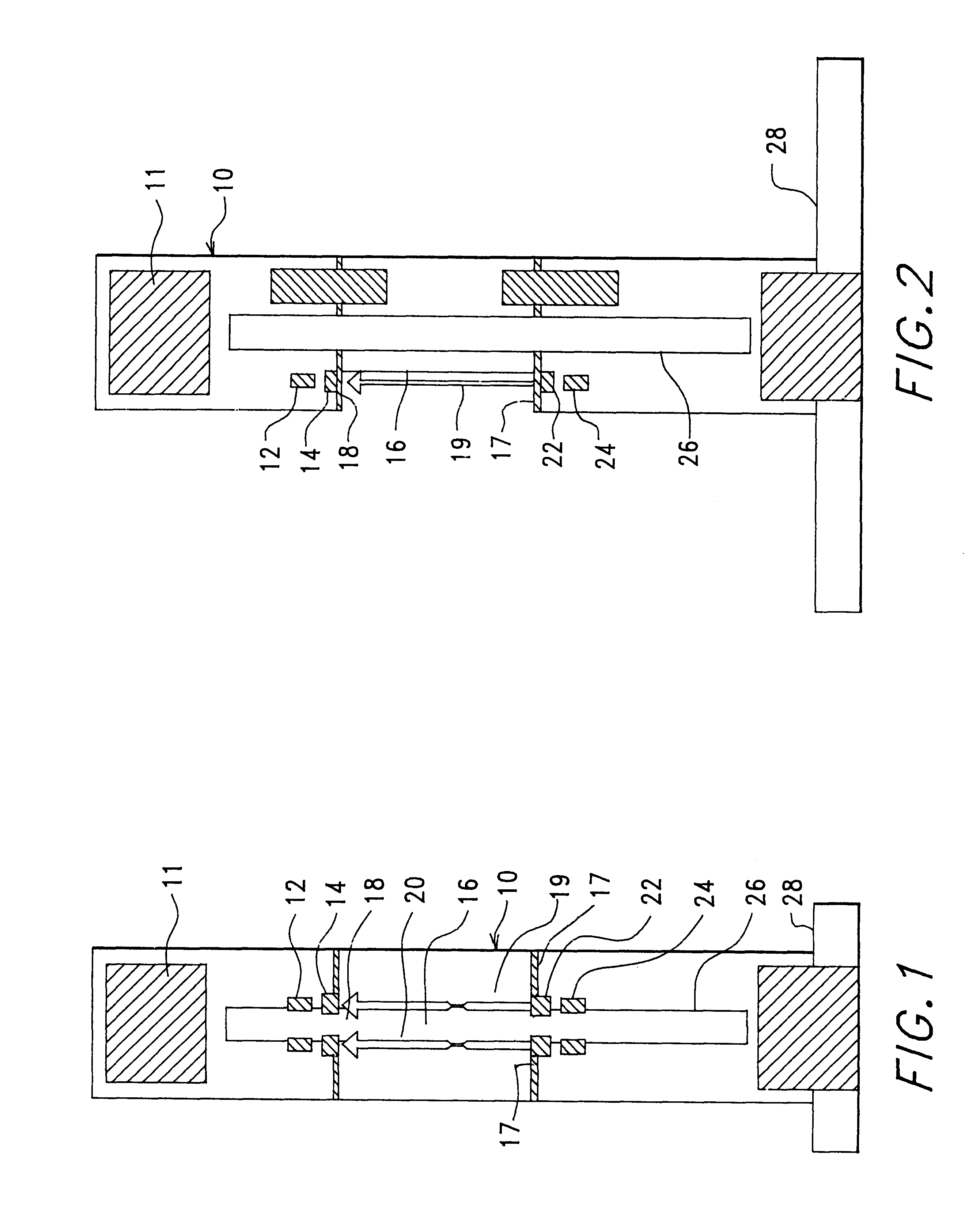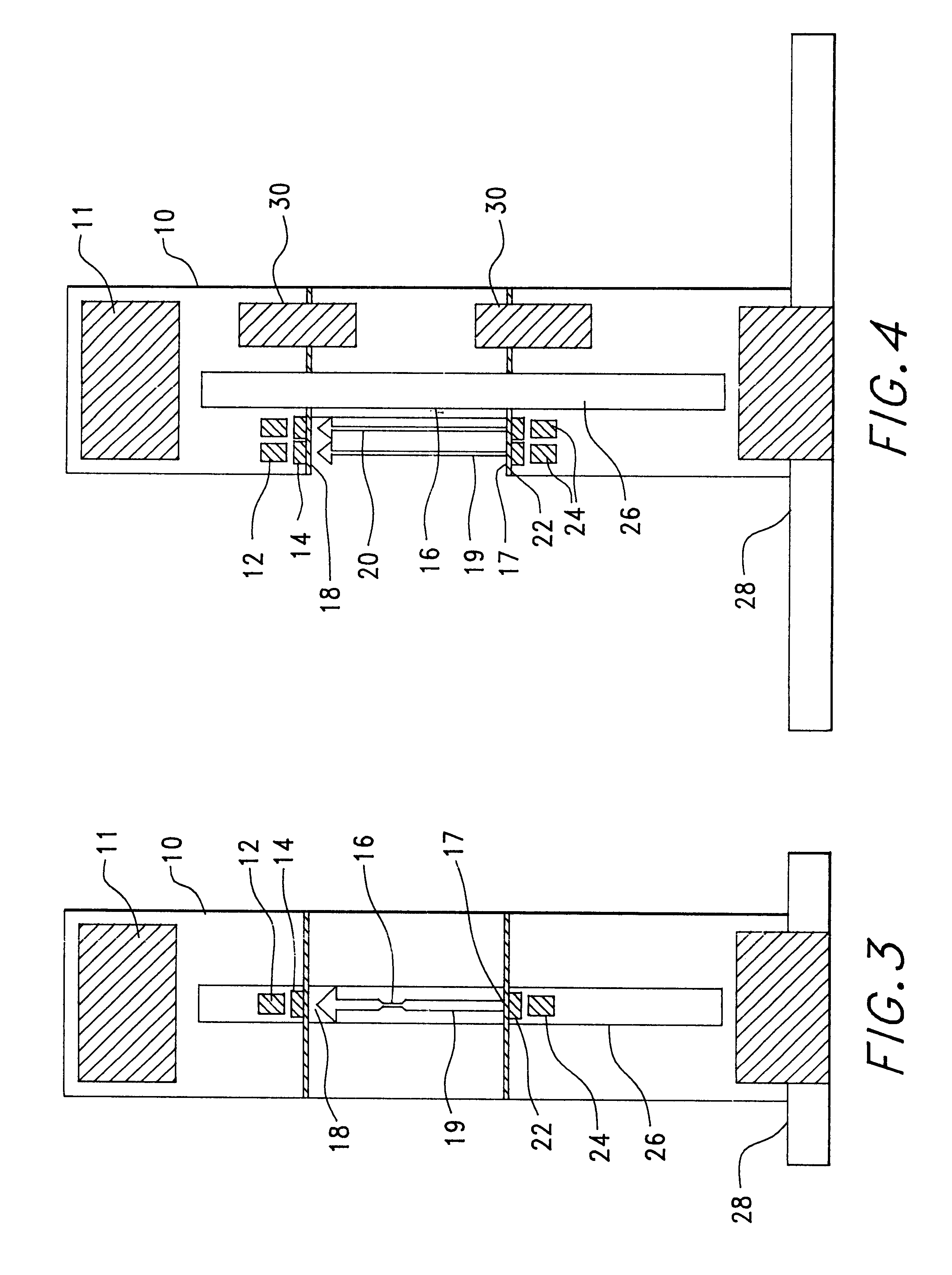Electro-optic ice detection device
a detection device and optical technology, applied in the field of ice detection, can solve the problems of increasing the risk of flying, ice and ice buildup has been blamed for numerous accidents, and ice poses a significant problem, and achieves the effect of simple optical
- Summary
- Abstract
- Description
- Claims
- Application Information
AI Technical Summary
Benefits of technology
Problems solved by technology
Method used
Image
Examples
Embodiment Construction
. The invention is described using two beams, however the invention will work with one or more beams.
FIG. 1 is a front view of the Ice Detection Probe and shows the Housing 10, Wiring Cavity 11, Beam Detector 12, Optical Filter 14, Recessed surface including a base portion 16, First side portion 17, Second side portion 18, Beam 119, Beam 220, Transparent Windows 22, Emitters 24, Heater 26, and the Attachment Plate 28. FIG. 2 is a side view of the Ice Detection Probe and shows the Housing 10, Wiring Cavity 11, Beam Detector 12, Optical Filter 14, Recessed surface base portion 16, First side portion 17, Second side portion 18, Beam 119, Transparent Windows 22, Emitters 24, Heater 26, and the Attachment Plate 28 The Beam 1, 19, and Beam 2, 20 at the same depth. For best results the beams are 0.02 inches above the Recessed Surface base portion 16.
FIG. 3 is a front view of the second preferred embodiment and shows the Housing 10, wiring Cavity 11, Infrared Beam Detector 12, Optical Filte...
PUM
 Login to View More
Login to View More Abstract
Description
Claims
Application Information
 Login to View More
Login to View More - R&D
- Intellectual Property
- Life Sciences
- Materials
- Tech Scout
- Unparalleled Data Quality
- Higher Quality Content
- 60% Fewer Hallucinations
Browse by: Latest US Patents, China's latest patents, Technical Efficacy Thesaurus, Application Domain, Technology Topic, Popular Technical Reports.
© 2025 PatSnap. All rights reserved.Legal|Privacy policy|Modern Slavery Act Transparency Statement|Sitemap|About US| Contact US: help@patsnap.com



